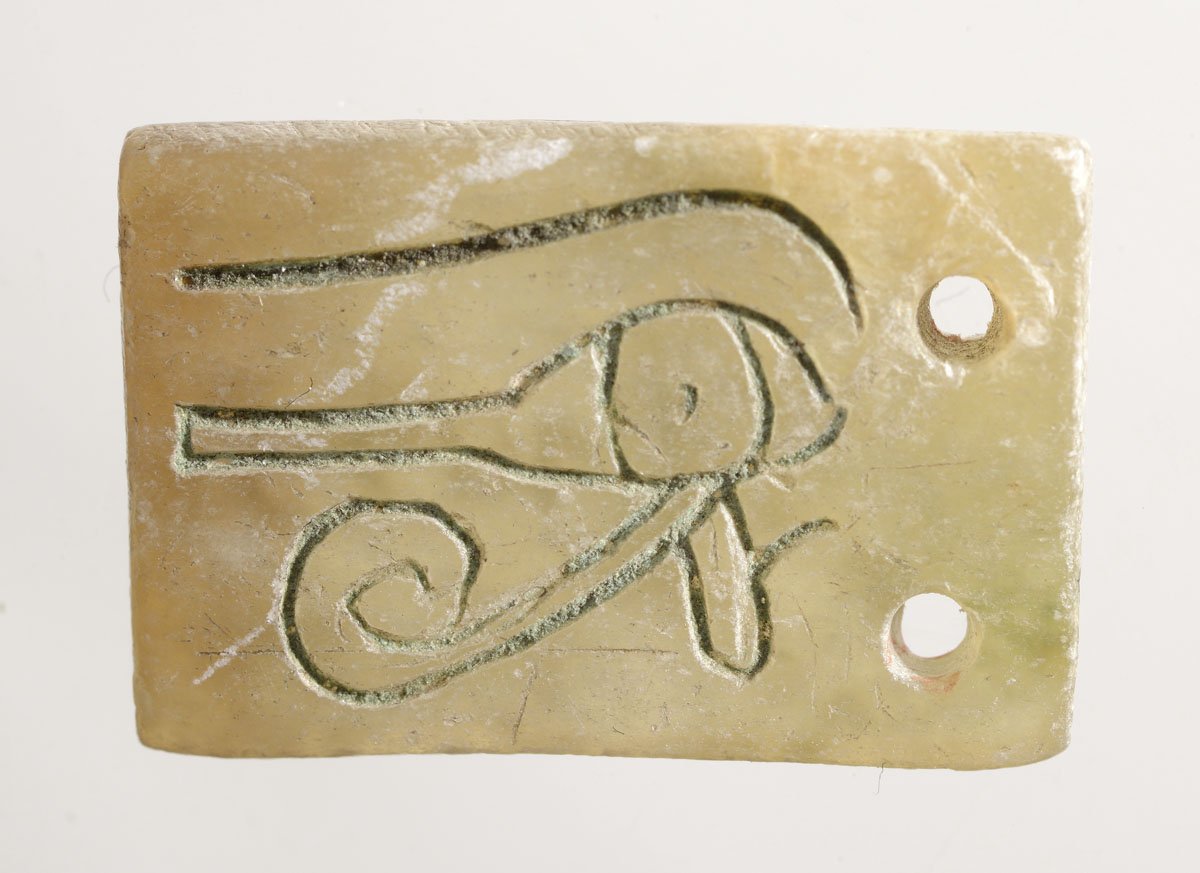
Plaque with Wedjat Eye
Egyptian Art
| Place of production | Egypt |
|---|---|
| Date | second half of the 1st millennium B.C. |
| Object type | organic remains |
| Medium, technique | Animal mummy, linen |
| Dimensions | 32 × 8 × 7 cm |
| Inventory number | 98.3-E |
| Collection | Egyptian Art |
| On view | Museum of Fine Arts, Basement Floor, Ancient Egypt, Temples and gods |
The falcon played a central role in ancient Egyptian religion and mythology, it was considered as the main form of manifestation of several gods (Re, Re-Harakhte, a number of local versions of the god Horus, Nemty, etc.). Owing to its close relationship with the god Horus, the falcon was also associated with the person of the king, the earthly incarnation of Horus: the king is frequently depicted as a falcon along with other royal animals (lion, bull). Although the veneration of falcon gods is attested as early as in the Pre-Dynastic Period (before 3000 BC) in Egypt, the practice of falcon mummification began in the seventh century and lasted until around the second century AD.
The Egyptians of the Late Period considered each falcon as a sacred animal; dead specimens were mummified without distinction of sex and breed, and placed in separate cemeteries, which were known as Heresieon in the Greco-Roman Period. Their burial places all over the country included not only falcons but other kinds of predatory birds considered identical with them (kestrels, sparrowhawks, buzzards, etc.), even mummified specimens of prey (rodents, reptiles) were also found that served as food supply for the predators in the afterlife.
This record is subject to revision due to ongoing research.